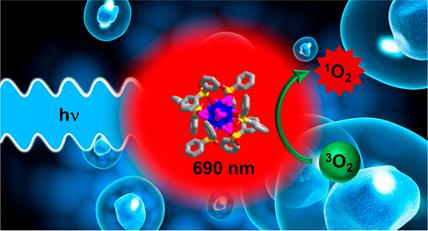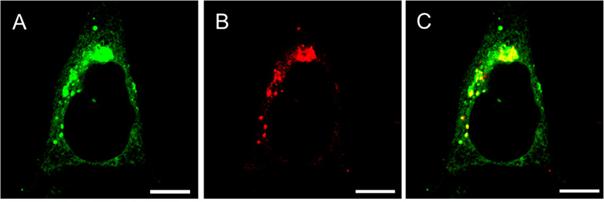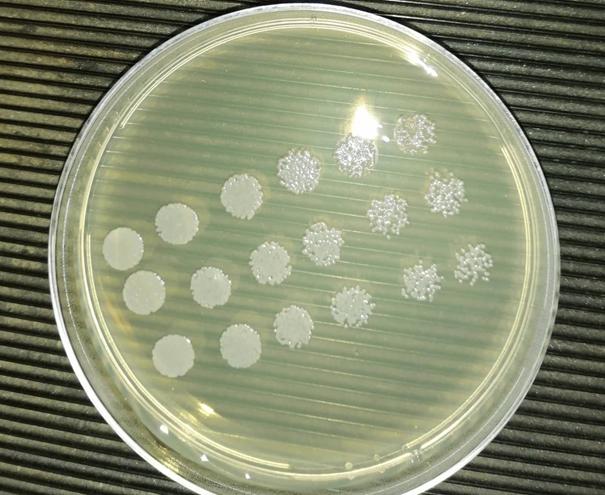Home Publications
Photobiology of materials based on Mo6I8 clusters and porphyrin frameworks
The molecular clusters based on Mo6I8 core with variable outer ligands and the porphyrin frameworks share the ability to catalyze the production of highly reactive singlet oxygen upon illumination with light or irradiation with X-rays. They serve for the preparation of soluble molecules, nanolayers, or nanoparticles that could kill cancer cells or pathogenic bacteria upon illumination or irradiation. In collaboration with Dr. Kamilem Langem a Dr. Kaplanem Kirakci from the Institute of Inorganic Chemistry, Czech Academy of Sciences, our group test the biological properties of such novel materials. We culture normal and cancer cells of human origin in our tissue culture facility and illuminate them with special light sources or with X-rays. Our hypoxic chamber allows us to work under low physiologically relevant level of oxygen. We can determine the cellular uptake and localization of cluster compounds or nanoparticles with confocal microscope or with structure illumination super-resolution microscope (SIM). The nanoparticles are also specifically targeted to cancer cells using molecular recognition. The promising materials are further tested on mouse models in collaboration with Dr. Milanem Reinišem from Institute of Molecular Genetics, Czech Academy of Sciences. The antibacterial properties of compounds, layers and particles are determined using our microbiology facility and model strains of bacteria relevant in clinics. The bacteria are cultured in the form of biofilm, a naturally occurring multicellular structure with enhanced physical and chemical resistance.




Funding
- Biomaterials based on octahedral molybdenum clusters as singlet oxygen radiosensitizers, GA18-05076S, Czech Science Fundation
Publications
- Kirakci K., Nguyen T.K.N., Grasset F., Uchikoshi T., Zelenka J., Kubát P., Ruml T., Lang K.: Electrophoretically Deposited Layers of Octahedral Molybdenum Cluster Complexes: A Promising Coating for Mitigation of Pathogenic Bacterial Biofilms under Blue Light. ACS Appl Mater Interfaces, 2020. IF 8,758
- Kirakci K., Demel J., Hynek J., Zelenka J., Rumlová M., Ruml T., Lang K..: Phosphinate Apical Ligands: A Route to a Water-Stable Octahedral Molybdenum Cluster Complex. Inorg Chem 58:16546–16552, 2019. IF 4,850
- Kirakci K., Zelenka J., Rumlová M., Cvačka J., Ruml T., Lang K.: Cationic octahedral molybdenum cluster complexes functionalized with mitochondria-targeting ligands: photodynamic anticancer and antibacterial activities. Biomater Sci 7:1386-1392, 2019. IF 5,831
- Kirakci K., Zelenka J., Rumlová M., Martinčík J., Nikl M., Ruml T., Lang K.: Octahedral molybdenum clusters as radiosensitizers for X-ray induced photodynamic therapy. J Mater Chem B 6:4301-4307, 2018. IF 5,047
- Hynek J., Zelenka J., Rathouský J., Kubát P., Ruml T., Demel J., Lang K.: Designing Porphyrinic Covalent Organic Frameworks for the Photodynamic Inactivation of Bacteria. ACS Appl Mater Interfaces 10:8527-8535, 2018. IF 8,456
- Buzek D., Zelenka J., Ulbrich P., Ruml T., Krizova I., Lang J., Kubat P., Demel J., Kirakci K., Lang K.: Nanoscaled porphyrinic metal-organic frameworks: photosensitizer delivery systems for photodynamic therapy. J Mater Chem B 5:1815-1821, 2017. IF 5,047
